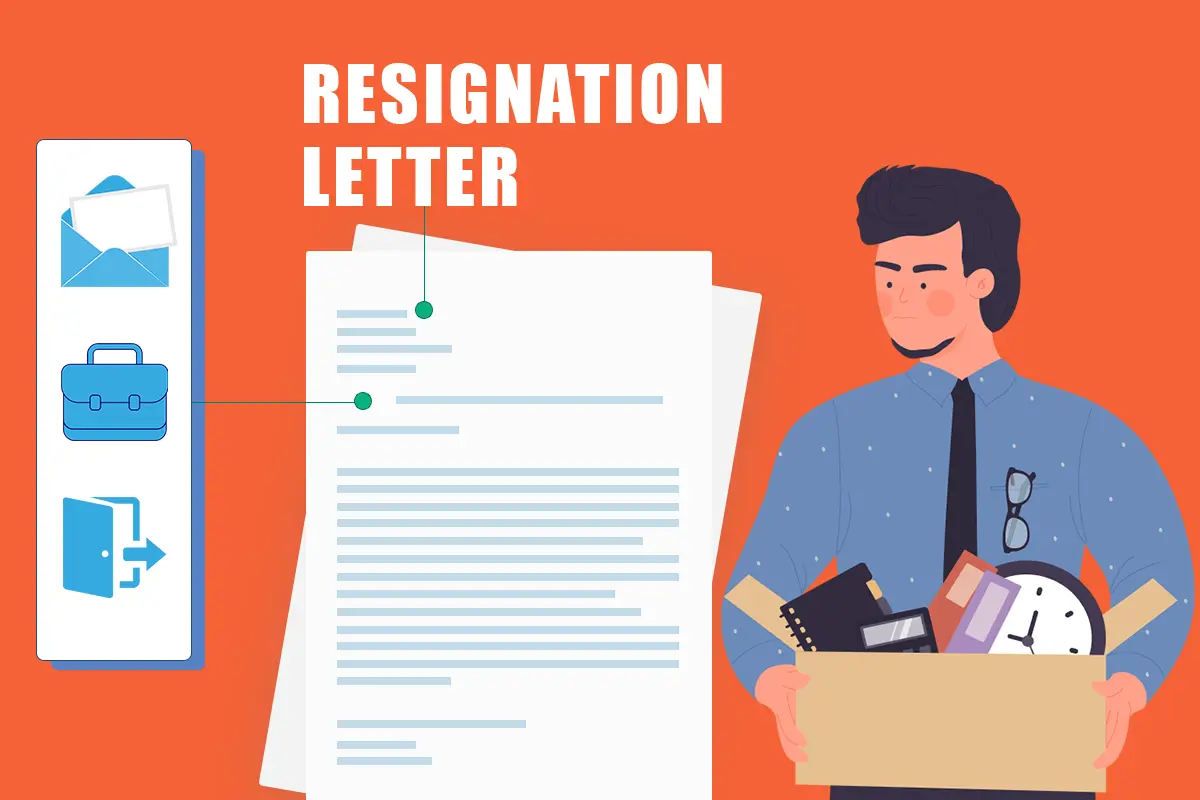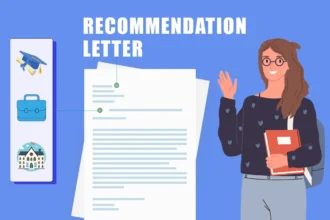How to Write a Letter of Recommendation: Tips, Steps, and Examples
Learn how to write a letter of recommendation with tips, steps, and examples that will stand out. Enhance your endorsements effectively with our comprehensive guide.

Zannat Mou
Last updated on Jul 11th, 2024

When you click on affiliate links on QuillMuse.com and make a purchase, you won’t pay a penny more, but we’ll get a small commission—this helps us keep up with publishing valuable content on QuillMuse. Read More.
Table of Contents
It can be a challenge when you have to write a letter of recommendation, but this blog post will guide you through the process. It’s a kind of writing by numbers; gather information about that person’s qualifications and character and present it in an organized way. You also get numerous examples that you can lift material from, as one cannot gather too many templates for use in their text. If you want the person taking your recommendation letter to stick out when applying to wherever they may go, this is a good place to start.
What is a recommendation letter?
A recommendation letter is a formal document that validates someone’s work, skills, or academic performance. It’s written by someone who can confirm and provide evidence of a person’s work ethic, achievements, and potential for future success. A recommendation letter is typically written by a person in authority or someone who has had a close relationship with the candidate, such as a manager, employer, teacher, or professor.
While the primary function of letters of recommendation is to verify information about an applicant and provide insight into their abilities from someone who knows them well (and in most cases also considers them credible), they can also serve as proof-reading tools to value candidates for jobs, people, references, etc.
Key Components of Letter of Recommendation
Writing a recommendation letter is one of the most important things you’ll be asked to do in your lifetime! It’s a very important document that provides a personal and professional endorsement of a candidate’s skills and character.
1. Introduction
The introduction provides an overview of the purpose and content of the letter. The writer may wish to provide background information regarding their connection to the candidate or how they came to know them. For example, if the writer is a teacher, they may want to mention how many years they have been teaching and what courses the student has taken with them. Adding this level of detail can help to establish credibility.
2. Qualifications and Background
This section must discuss the qualifications and background of the candidate, such as his or her education, skills, and other related experiences. It should detail which professional or academic background he or she has fit for the particular role or opportunity being applied for. This must be discussed first to present to the letter reader the basic strengths that he or she can use as a baseline toward achieving the discussed achievements also included in the letter.
3. Specific Achievements and Examples
In this key component, the writer should discuss the candidate’s specific achievements and contributions. This includes highlighting significant projects, responsibilities, or accomplishments that demonstrate the candidate’s skills and capabilities. While it’s important to be specific, this section should focus on providing a detailed narrative of the candidate’s accomplishments that are relevant to the application rather than using generalized statements. It underscores the candidate’s strengths through concrete examples that illustrate their effectiveness and impact.
4. Personal Qualities and Character
Apart from the professional or intellectual aspect, a recommendation letter would also give an account of the personal qualities and character of the person. This would reflect interpersonal interaction, attitude to work, or leadership traits in general. Such qualities as honesty, hard work, creativity, or how well one can work in a team, etc. would speak volumes about the candidate, thus portraying him/her as a 360-degree individual with the potential for success in new situations.
5. Conclusion and Strong Endorsement
The conclusion is the last paragraph of the recommendation letter; it should sum up why you are recommending the candidate. In this short conclusion, each of the main points from the body of your letter should be re-stated, followed by a short sentence or phrase that reveals that you recommend the candidate for whatever opportunity they are seeking.
You bring together the information on your candidate’s qualities and capabilities that would make them ideal for whatever it is they are asking you to recommend them for, summing up all these reasons in one positive endorsement sentence.
This wrap-up final endorsement sentence will communicate to whoever reads this letter that you have a lot of confidence in this person and that you strongly believe that they are an ideal candidate. Furthermore, make sure to write how they can contact you if there is anything else required when selecting your recommended student.
Tips on a Letter of Recommendation
Writing an effective letter of recommendation takes both a prepared reflection and a strategic approach. By following the tips below, you can ensure that your letter of recommendation paints the best picture possible of the candidate in terms of leadership, capability, and suitability.
1. Know Purpose
Before you start writing, there is a need to know for what purpose you are writing this letter. You should have the details of what the other person is looking for in the letter or which qualities of his should be presented in your reference. You can then write accordingly.
2. Know the candidate well
Make sure you have all possible details on a candidate’s profile, such as background, skill set, and accomplishments, through discussion, resume, or any other reference to generalize your statement.
3. Be specific and detailed
Avoid vague statements and generalities. Use specific examples and anecdotes to illustrate the candidate’s strengths, accomplishments, and unique qualities. This adds credibility and makes your endorsement more compelling.
4. Highlight key qualities
Focus on the qualities that are most relevant to the position or opportunity. Whether it’s leadership, teamwork, problem-solving, or creativity, emphasize the attributes that align with the candidate’s goals.
5. Structure your letter clearly
Organize your letter with a clear structure: an introduction, body paragraphs detailing qualifications and examples, and a strong conclusion. This makes the letter easy to read and ensures all key points are covered.
6. Respect Confidentiality
Please treat the content of this memo as confidential and intended only for those approved recipients. Maintaining the confidentiality of our candidates is critical to ensuring trust and professionalism.
7. Be Honest and Fair
Provide an honest assessment of the candidate’s abilities. While it’s important to be positive, avoid overstating their qualifications. A balanced and truthful evaluation is more valuable and trustworthy.
4 Steps for Writing a Letter of Recommendation
Writing a recommendation letter involves a systematic and comprehensive process to assure quality results. Here are four of the most common steps that you should take when creating a recommendation letter:
1. Preparation and Gathering Information
First of all, before you begin writing the letter, get as much information as possible about the candidate. Understand what they are applying for (the purpose of the recommendation) and request specific information or a job ad if necessary. Make sure you have received their resume, personal statement, or any other relevant document that can remind you of their qualifications and experiences. I think it’s also important to talk to them, asking, “Okay, which experiences or strengths would you like me to highlight in my letter? This helps make sure your letter is relevant for those reading it.
2. Organizing the Letter
Structure the letter in a clear and logical format. Usually, a recommendation letter follows this format:
Introduction
State who you are, what your job is, and your relationship with the candidate, as well as how long you’ve known them.
Body Paragraphs
Provide plenty of detail about the person you are recommending. If it’s for a particular position or school, say something about that too. Give examples that prove that they possess these qualities. Make sure to give an example of how each quality was demonstrated.
Conclusion
Summarize the recommendation of the candidate, indicating their suitability for the job or opportunity. Offer contact information if needed for further queries.
3. Writing the Letter
With all preliminary preparations behind you, begin writing the letter. Use a positive and professional tone throughout and take care to adopt it immediately according to your relationship with the candidate. Start with an impactful opening statement that will convince the potential employers that you are in a position to assess this candidate’s candidature accurately.
Be detailed and particular in your body paragraphs explaining how worthy this candidate is. As in any other recommendation, provide some achievements as evidence of good qualities claimed. Make sure you mention their major features, which match the employer’s requirements for the job they apply for, all while remembering not to mention anything even remotely negative about them by confidentiality rules or out of fear they might not get hired otherwise—helpful! Finally, restate your endorsement one more time at the recipient’s disposal.
4. Reviewing and Editing
Once you have written your letter, take the time to review and edit it for clarity, coherence, and correctness. Make sure there are no errors in grammar or spelling, and that your letter is clear and succinct. Ensure that you have covered all of the relevant points you need to make and that your letter moves logically from one point to the next. You may also want to ask a colleague or peer to read over the letter before sending it. Two heads are better than one, after all! A polished letter reflects well on you as well as on the candidate, making both of you look good and making sure your recommendation has its intended effect!
Examples of Writing Recommendation Letters
Here are two examples of recommendation letters for you to use:
1. Example: Academic Recommendation
To Whom It May Concern,
I am very pleased to recommend Fozia for admission to your graduate program. I have been Fozia's professor for the past three years and have always been impressed with her dedication and extraordinarily high work ethic. In class, she consistently demonstrated an exceptional understanding of difficult material, and her insightful contributions were often the highlights of our discussions in my Advanced Biology class.
As part of a semester project, she took on a topic that I had decided was too ambitious (the implications of mutations in cystic fibrosis), but she proved me wrong, producing an outstanding paper and presentation. Not only is she highly intelligent and motivated, but she also has the rare ability to effectively communicate what she knows to others. Her enthusiasm for learning and intellectual curiosity will make her a perfect fit for your program.
I am confident that Fozia will be an excellent addition to your graduate program and a valuable member of your academic community.
Sincerely,
Dr. Emila
Professor of Chemistry
2. Example: Professional Recommendation
To Whom It May Concern,
I am writing to recommend Jhonson for the position of marketing manager at your company. During his tenure with AmeriTech Solutions, Jhonson provided excellent leadership and innovative thinking, resulting in a 40% increase in our annual sales.
Jhonson's ability to analyze market trends and devise effective strategies was integral to our multiple successful product launches. He is an effective communicator who can multitask and have several balls in the air without dropping any. Jhonson's work ethic, combined with his commitment to producing top-quality work, will prove highly valuable.
I do not doubt that Jhonson would do the same for you, making him a brilliant addition to your team.
Best regards,
Santa Marina
Director of Marketing, AmeriTech Solutions
The Role of Tone and Language in Recommendation Letter
The tone and language used in a recommendation letter are important factors in the first impression that the candidate gives to a potential employer or committee. The right tone or language can ensure that your letter is effective.
1. Professionalism and formality
Recommendation letters are formal documents and should maintain a professional tone throughout. This includes using appropriate salutations and formal language and addressing the recipient respectfully. A professional tone enhances the credibility of the writer and the seriousness with which the recommendation is considered.
2. Positive and enthusiastic tone
A positive and enthusiastic tone conveys the writer’s endorsement that the candidate is among the best students or scientists he or she has ever known or worked with, in his or her expert opinion.
3. Specificity and detail
The language you use should be precise and detail-oriented, providing specific examples of anecdotes to back up claims about the candidate’s qualifications and accomplishments. Specific language will help lend credibility to the recommendation and paint a more vivid picture of the candidate’s abilities.
4. Adaptation to Context and Audience
The tone and language should be adapted to the specific context and audience of the recommendation letter. For example, a letter for a job application may focus on professional achievements and skills, whereas a letter for an academic program may emphasize intellectual curiosity and academic achievements. Understanding who the reader will be can help writers decide what language to use.
5. Balance and Integrity
It is important to balance highlighting the candidate’s strengths with providing a fair and honest assessment. A positive communication style should be used, but it should not become hyperbolic or exaggerated in a way that will undermine the recommendation’s credibility. The language of integrity helps ensure that the recommendation can be trusted.
6. Clarity and Structure
A coherent and structured language will enhance the readability and effect of the recommendation letter. Good organization, with a single introduction, body paragraphs, and a conclusion, not only helps in better addressing issues but also weakens any chances to omit key information in the process. Clarity is important as it avoids misreading others due to ambiguity in what the referee meant.
The Impact of a Well-Written Recommendation Letter on Career Opportunities
A good recommendation letter can help boost your career prospects by highlighting the candidate’s skills, accomplishments, and potential with a credible endorsement. With this solid assertion of the authority of their qualifications, you will find that it facilitates decision-making for hiring panels or admissions committees in your favor.
The right reference only goes so far as to underscore how you set yourself apart from competing candidates by praising unique strengths or achievements, something that is sure to inspire trust and confidence in their capacity. Most significantly, however, it creates new avenues for employment leads or academic opportunities that are just waiting for someone with some clout to speak up on their behalf.
Tools and Resources for Writing Exceptional Recommendation Letters
Numerous tools and resources can help you to write a strong recommendation letter. Templates and examples of recommendation letters may be found online, as well as guidelines on how to write a formal letter. Most universities or professional organizations have developed their criteria for writing a letter of recommendation, which one must write based on the guidelines provided in each case.
You can also work directly with the candidate to get more information about accomplishments and to discuss points you may want to highlight in your reference. Proofreading tools will help you ensure your recommendation is error-free, while sharing your drafts with peers means they can act both as proofreaders and advisers before submitting your final copy.
Conclusion
To write a letter of recommendation, first, you must understand the purpose of the letter, as well as what information is required and what would be useful and included. Begin with your name, address, telephone number, and email. Next, provide some brief background information on how you know that person as well as for how long. Be precise in identifying their strengths or skills; it helps to close with an endorsement to demonstrate your confidence in their abilities, and in case the recipient has questions, he will be able to get back to you easily.
FAQs
What should I include in the introduction of a recommendation letter?
In the introduction, you should briefly state your relationship with the candidate and how long you have known them, as well as your position or role, to establish credibility. You will want to mention what job they are applying for or what program they are applying to and give some kind of summary or overall impression of the candidate.
How can I ensure my letter of recommendation stands out?
Personalize the letter by sharing unique stories and insights about the candidate. Use a professional yet engaging tone. Highlight what makes the candidate exceptional and how they can add value to the prospective opportunity or institution.
What are some common mistakes to avoid in a recommendation letter?
Avoid vague or generic statements, exaggerations, and irrelevant information. Ensure your recommendation letter is well organized, free of grammatical errors, and not too long. Avoid being overtly critical or focusing on the candidates’ weaknesses.
Can I use a template to write a recommendation letter?
Yes, using a template can help you structure your letter effectively. However, ensure you customize it to fit the specific candidate and context. Avoid using generic templates without personalization, as this can make the letter feel less impactful.
How we've reviewed this article
Our content is thoroughly researched and fact-checked using reputable sources. While we aim for precision, we encourage independent verification for complete confidence.
We keep our articles up-to-date regularly to ensure accuracy and relevance as new information becomes available.
- Current Version
- Jul 11th, 2024
- Jul 10th, 2024



